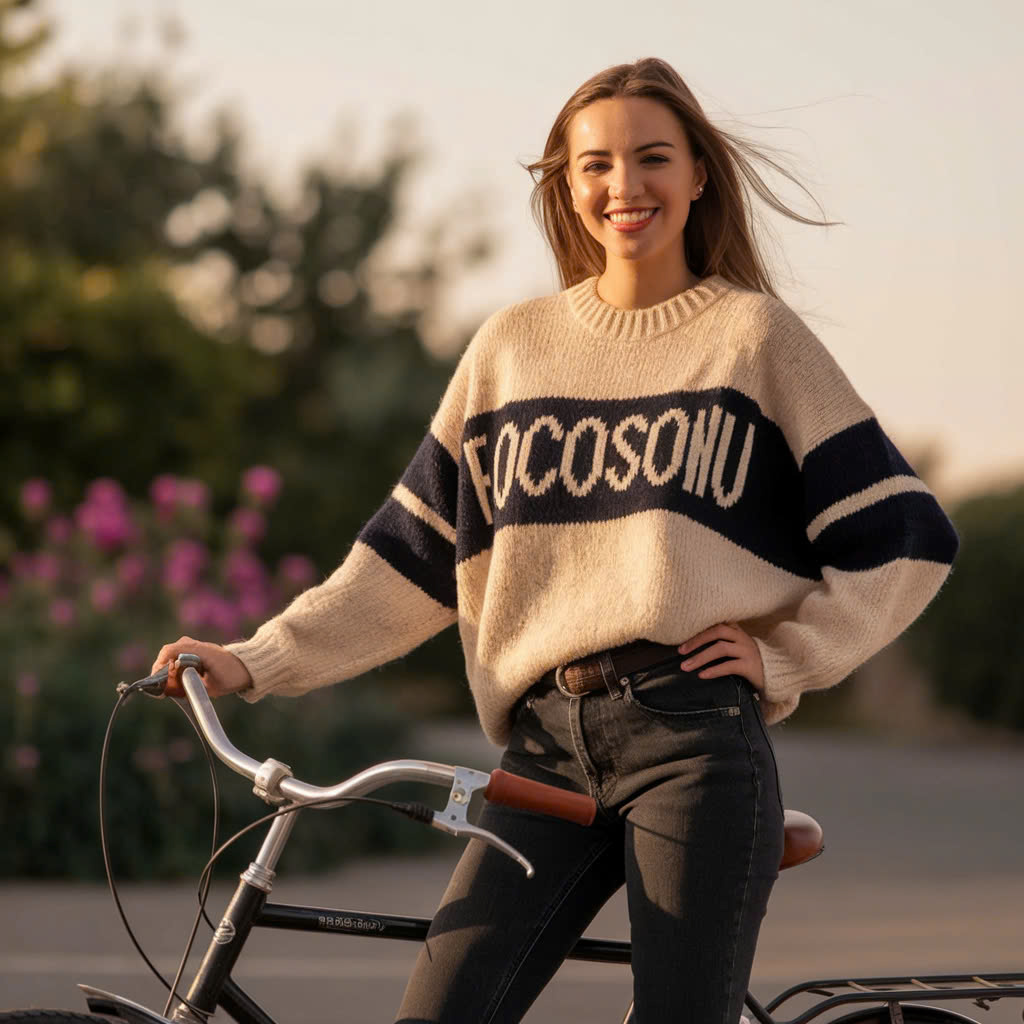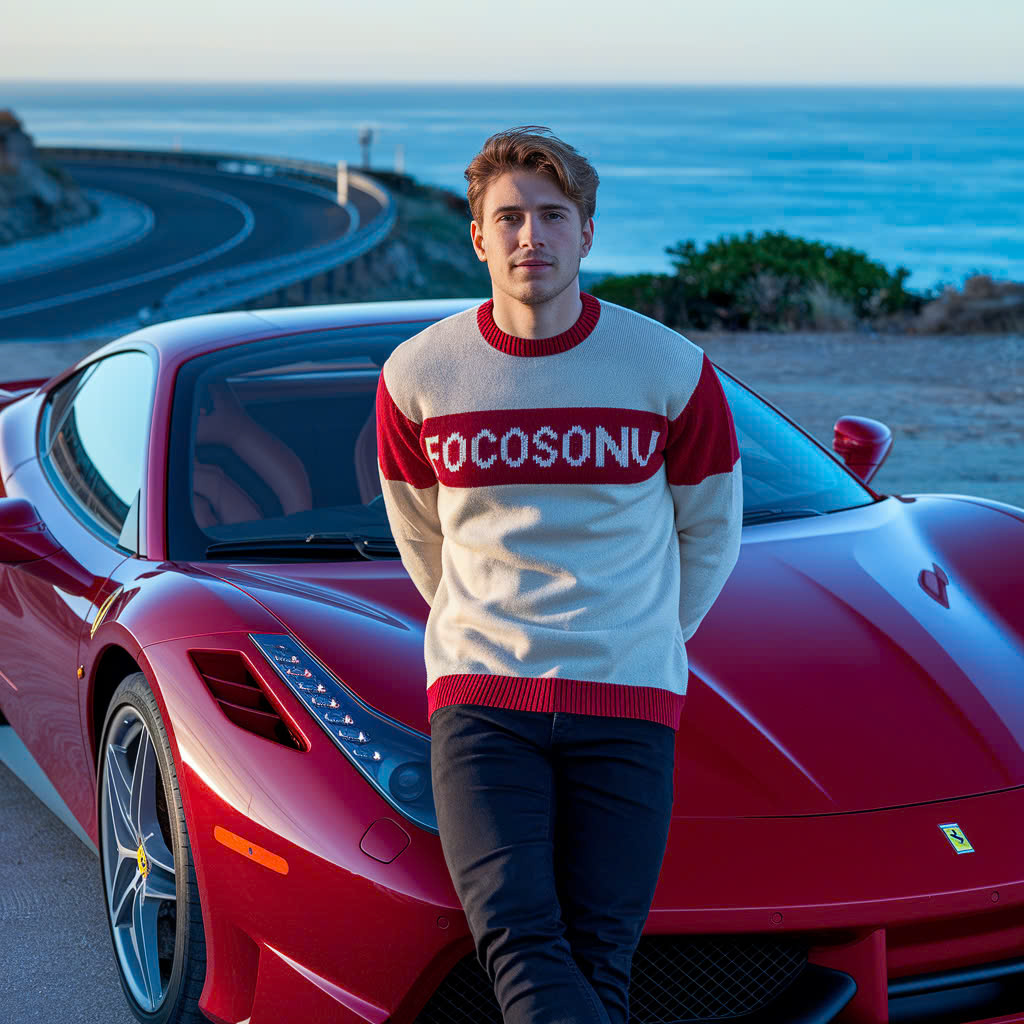Sweaters are more than just garments; they are symbols of comfort, style, and craftsmanship that have evolved with time. From their humble beginnings as practical wear for cold climates to becoming a staple in modern fashion, sweaters embody a blend of history, innovation, and artistic expression. This article delves into the origins, design elements, and cultural significance of sweaters, while also highlighting how they have adapted to modern trends and sustainable practices.
A Historical Perspective
The origins of the sweater can be traced back to the early days of hand-knitting. Historically, knitwear was a practical solution for communities living in colder regions. Early sweaters were often made by hand, with family members passing down knitting techniques from one generation to the next. These garments provided necessary insulation and were crafted from locally available fibers such as wool, which offered both warmth and durability.
In the 19th century, the industrial revolution brought about significant changes in textile manufacturing. Mechanized looms and knitting machines began to take the place of hand-knitting, allowing for mass production of sweaters. This period marked the transformation of sweaters from solely utilitarian items to objects of personal style and cultural identity. As they became more accessible, various styles emerged, each with distinctive patterns and textures that reflected regional traditions.
Materials and Craftsmanship
One of the key factors behind the enduring popularity of sweaters is the variety of materials used in their construction. Wool remains the classic choice due to its natural insulation properties and moisture-wicking abilities. Merino wool, known for its softness and fine fibers, has become particularly popular in modern knitwear. However, innovation in textile technology has also seen the incorporation of alternative fibers such as cotton, cashmere, alpaca, and even synthetic blends that enhance durability and ease of care.
The craftsmanship behind a high-quality sweater is evident in its construction. Traditional knitting techniques such as hand-crafting cables, fair isle patterns, and intricate colorwork not only contribute to the garment’s aesthetic appeal but also showcase the artisan’s skill. Modern manufacturing processes often merge these time-honored techniques with cutting-edge technology, ensuring that each sweater maintains a balance of style, comfort, and longevity.
Design Evolution: From Function to Fashion
Over time, sweaters have undergone a remarkable evolution. Originally designed for function—providing warmth during harsh winters—they have transformed into versatile fashion statements suitable for a range of occasions. In the mid-20th century, sweaters began to appear in mainstream fashion, with designers experimenting with silhouettes, textures, and patterns.
In the 1960s and 1970s, sweaters were emblematic of youth culture and countercultural movements. Bold colors, oversized fits, and unconventional designs were introduced, reflecting the spirit of rebellion and individuality. This era also saw the rise of “preppy” styles, where classic cable-knit sweaters became synonymous with Ivy League fashion. The juxtaposition of rugged hand-knitting with polished, collegiate aesthetics created a dynamic tension that still influences modern style.
The versatility of sweaters makes them ideal for layering. Whether worn over a collared shirt for a formal look or paired with jeans for a casual vibe, sweaters can adapt to various social settings. Designers continue to push boundaries by integrating modern elements—such as asymmetrical cuts, mixed materials, and innovative patterns—while still preserving the cozy essence that defines a sweater.
Varieties of Sweaters
The world of sweaters is incredibly diverse. Each style caters to different needs and personal tastes. Some of the most popular varieties include:
- Pullover Sweaters: This classic style is characterized by its simple, one-piece design that is pulled over the head. Pullover sweaters are available in a range of necklines, including crew, V-neck, and turtleneck, making them a versatile choice for layering.
- Cardigans: Unlike pullovers, cardigans are open at the front and often fastened with buttons or zippers. Their open design allows for easier layering, making them ideal for transitional weather. Cardigans can range from thin, lightweight fabrics to chunky, oversized knitwear.
- Crewnecks: Featuring a round neckline, crewneck sweaters are timeless and practical. Their simple design makes them a popular choice for both casual and semi-formal occasions.
- Turtlenecks: Offering extra warmth and a touch of sophistication, turtleneck sweaters are a favorite during colder months. They can be worn as a standalone piece or layered under jackets and coats.
- Cable-Knit Sweaters: Distinguished by their intricate woven patterns, cable-knit sweaters are a nod to traditional knitting techniques. Their textured appearance adds depth to any outfit, making them a classic choice for those who appreciate artisanal craftsmanship.
Cultural Impact and Iconic Moments
Sweaters have often been at the center of cultural and social narratives. In literature and film, the sweater has been used as a metaphor for warmth, comfort, and protection. Iconic figures in popular culture have been seen sporting signature knitwear that not only enhanced their image but also helped to popularize the garment worldwide.
In the realm of sports, team sweaters have become a symbol of camaraderie and unity. They are often emblazoned with team logos and colors, uniting fans and athletes alike under a common banner. This phenomenon is particularly evident in European football clubs, where a sweater or jumper is synonymous with local pride.
Moreover, the resurgence of vintage fashion in recent years has reinvigorated interest in retro sweater designs. Collectors and fashion enthusiasts often seek out antique or vintage pieces that capture the nostalgic essence of bygone eras. The blending of old and new trends underscores the sweater’s ability to transcend time and maintain its relevance in an ever-changing fashion landscape.
The Role of Sustainability in Modern Knitwear
As environmental concerns become increasingly central to consumer choices, the fashion industry has seen a significant shift toward sustainable practices. Sweaters, with their rich history of craftsmanship and quality, are now being reinvented to meet modern eco-friendly standards.
Natural fibers like organic cotton and sustainably sourced wool are at the forefront of this movement. Many designers are now focusing on ethical production methods, ensuring that every stage of the sweater’s creation—from raw material sourcing to manufacturing—is carried out in an environmentally responsible manner. Additionally, recycling programs for old garments and upcycling initiatives have gained traction, allowing consumers to extend the life of their favorite knitwear.
This commitment to sustainability is not only a response to consumer demand but also a reaffirmation of the value of quality over quantity. In a world of fast fashion, investing in a well-crafted sweater is seen as a timeless decision, one that emphasizes durability, versatility, and the importance of ethical consumption.
Sweaters in the Global Fashion Scene
The influence of sweaters extends far beyond their utilitarian origins. In the global fashion scene, they are celebrated for their ability to blend comfort with sophistication. Designers from high-end fashion houses to emerging independent labels continue to experiment with knitwear, pushing the boundaries of what a sweater can represent.
In recent fashion weeks around the world, runway shows have featured an eclectic mix of sweater styles. From minimalist designs with clean lines to avant-garde interpretations that incorporate unexpected textures and patterns, the modern sweater is a canvas for creative expression. Collaborations between knitwear artisans and top designers have resulted in limited-edition collections that merge traditional techniques with futuristic aesthetics.
Fashion bloggers and influencers have also played a significant role in elevating the sweater’s status. Social media platforms are flooded with images of stylish ensembles featuring statement sweaters that capture both casual and formal vibes. This digital revolution has democratized fashion, allowing individuals to share their personal style and reinterpret classic pieces in new and innovative ways.
Crafting the Perfect Sweater: A Blend of Art and Science
The process of creating a high-quality sweater is a blend of art and science. Designers must consider factors such as fiber selection, knitting technique, and pattern design, while also ensuring that the final product meets both aesthetic and functional criteria. Each sweater is a testament to the meticulous work of designers and manufacturers who strive to create garments that stand the test of time.
Innovation in textile technology has led to the development of fabrics that not only offer superior insulation but are also lightweight and breathable. Techniques such as seamless knitting and 3D knitting technology allow for the creation of sweaters with fewer seams, reducing bulk and enhancing comfort. These technological advancements have paved the way for more ergonomic designs that fit the body more naturally, providing an ideal balance between style and comfort.
The scientific aspect of sweater design also extends to the way materials are treated. Processes such as washing, blocking, and finishing are crucial in ensuring that the sweater retains its shape and softness after multiple wears and washes. Manufacturers invest in research and development to optimize these processes, resulting in garments that maintain their aesthetic appeal over time.
The Versatility of Sweaters: Style for Every Occasion
One of the greatest strengths of the sweater is its versatility. A well-chosen sweater can effortlessly transition from a relaxed day at home to a chic evening out. This adaptability is largely due to the variety of styles and the ease with which sweaters can be layered with other garments.
For instance, a classic crewneck sweater paired with tailored trousers and a blazer can create a smart-casual look suitable for office environments or social gatherings. Conversely, a chunky, oversized sweater worn with jeans or leggings exudes a casual, laid-back vibe perfect for weekend outings or a cozy day at home.
The color palette available for sweaters is equally diverse. Neutral shades like grey, black, and navy offer timeless appeal, while vibrant hues and intricate patterns can serve as the focal point of an outfit. Designers often play with color blocking, gradients, and even hand-painted effects to create unique pieces that resonate with individual tastes.
Caring for Your Sweater: Tips and Techniques
Investing in a quality sweater comes with the responsibility of proper care and maintenance. Unlike mass-produced garments that may quickly lose their charm, a well-made sweater can remain a cherished part of your wardrobe for years if cared for correctly. Here are some tips for keeping your sweater in top condition:
- Washing: Always refer to the care label. Hand washing or using a gentle cycle in cold water is often recommended for delicate fibers.
- Drying: Avoid wringing out your sweater. Instead, lay it flat on a clean towel to dry, reshaping it as needed to maintain its form.
- Storage: Fold sweaters rather than hanging them to prevent stretching. Consider using breathable garment bags for long-term storage.
- Repairs: Small issues such as loose stitches or minor snags should be addressed promptly by a professional or through a simple DIY fix to prevent further damage.
Innovations and Future Trends
The future of sweaters looks as dynamic as their past. As consumers continue to seek out sustainable and ethically produced fashion, the emphasis on quality and longevity in knitwear will only grow stronger. Technological advancements in textile manufacturing promise even more comfortable, durable, and environmentally friendly products.
One emerging trend is the integration of smart textiles into knitwear. Imagine a sweater that not only keeps you warm but also monitors your body temperature or adjusts its insulation based on the weather. While still in the early stages, research in wearable technology is poised to redefine what we expect from everyday garments.
Furthermore, customization is becoming increasingly popular. With advances in digital knitting and on-demand production, consumers may soon have the option to design their own sweaters. This bespoke approach not only celebrates individuality but also minimizes waste by producing items only when there is a confirmed demand.
Sweaters as a Reflection of Personal Identity
Beyond functionality and fashion, sweaters often hold personal significance. Many people have fond memories attached to a particular sweater—a gift from a loved one, a reminder of a cherished time, or simply a comfort item that offers a sense of security. In this way, a sweater becomes more than just an article of clothing; it transforms into an emotional artifact that carries with it stories, traditions, and personal identity.
The act of choosing a sweater can be deeply personal. Factors such as fit, texture, and color play a role in how one feels when wearing the garment. For some, the ritual of selecting a new sweater for a season is a way to embrace change and welcome the comforts of a new chapter in life. Others may find that a well-worn, vintage sweater speaks to a connection with the past, offering a tangible link to family history and cultural heritage.
Conclusion
Sweaters are a timeless wardrobe staple that encapsulate the convergence of history, art, and innovation. Their evolution from hand-knitted garments designed for survival in harsh climates to versatile fashion pieces celebrated on global runways is a testament to their enduring appeal. With a rich history steeped in tradition, coupled with continuous advancements in design and technology, sweaters have secured their place not only as practical garments but also as symbols of cultural identity and personal expression.
From the meticulous craftsmanship that goes into each stitch to the endless array of styles available today, the sweater remains a beloved and indispensable part of modern fashion. As trends continue to evolve and new innovations emerge, one thing is clear: the sweater’s legacy is secure, and its role in our lives—whether as a functional piece of clothing or as a cherished keepsake—will endure for generations to come.
In celebrating the sweater, we acknowledge more than just a garment; we celebrate the fusion of art, culture, and technology. We honor the artisans who, through centuries, have turned a simple knit into an object of beauty and utility. And we look forward to a future where the sweater continues to adapt, inspire, and warm us both physically and emotionally.



